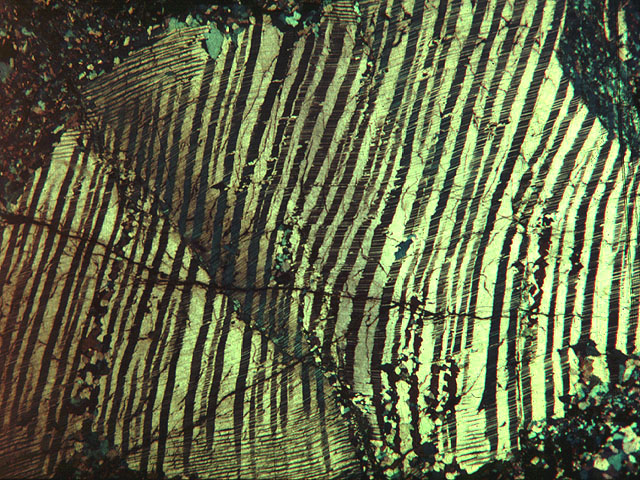Exsolution in Feldspar and Pyroxene

The views above, both XP, show two examples of exsolution. The one on the left shows a large K-feldspar grain with a single twin down its center. Included in the K-feldspar are stringers of plagioclase. K-feldspar with unmixed plagioclase is called perthite. The K-feldspar and plagioclase existed as a single solid solution mineral at high temperature but unmixed due to cooling.
The view on the right is of a clinopyroxene grain. At high temperatures, pyroxenes with intermediate Ca/Mg values are stable. Upon cooling they may unmix into two pyroxenes -- one Ca-rich and the other Ca-poor -- yielding a striped grain like the one shown.
The view of perthite (left)
comes from the Unversity in Lille, France: http://www.univ-lille1.fr/geosciences/cours/cours_mineralo/cours_mineralo_3.html.
The view on the right comes from the University of Melbourne:
http://jaeger.earthsci.unimelb.edu.au/Images/Mineralogical/Textures/main.html.
